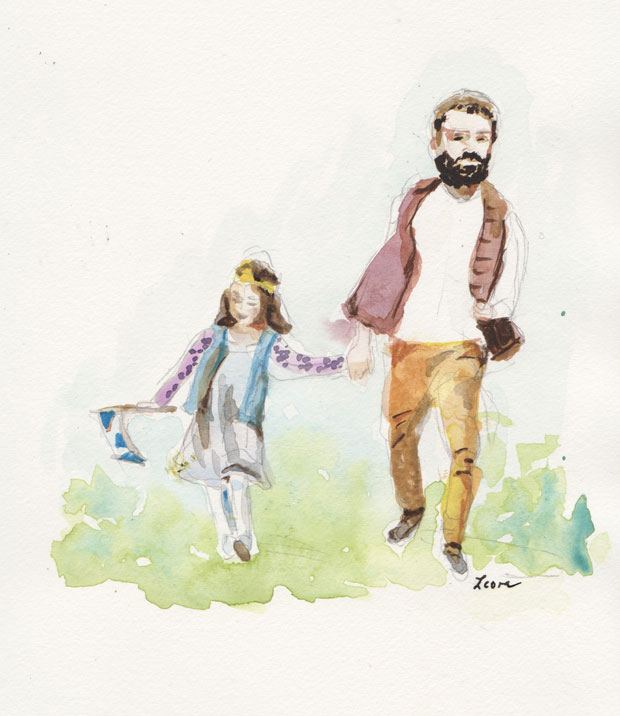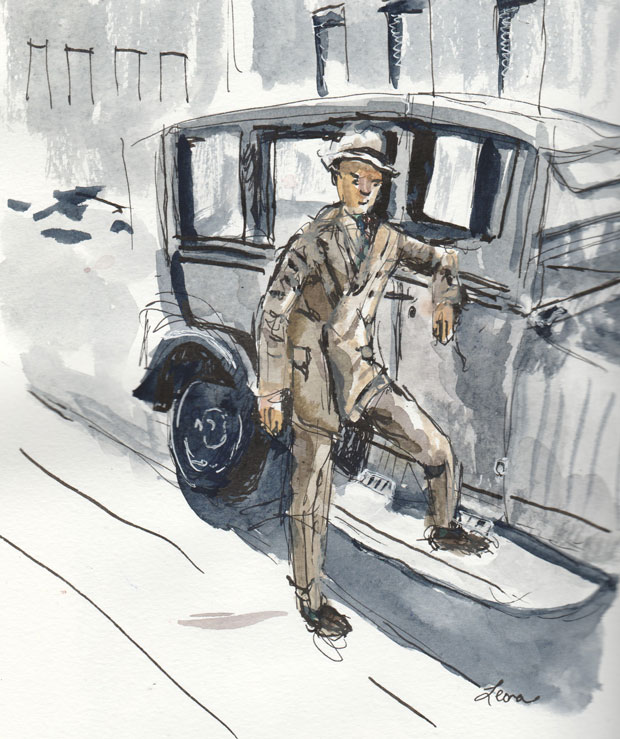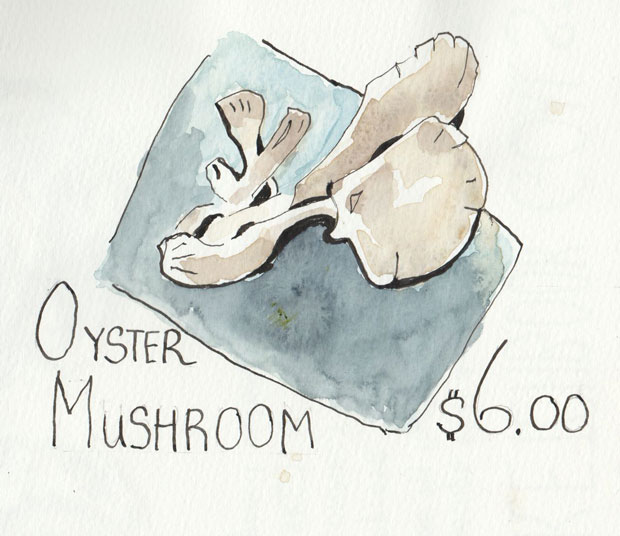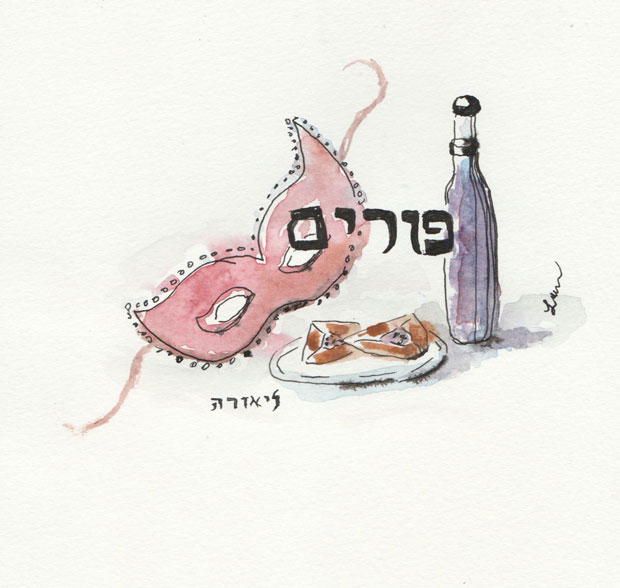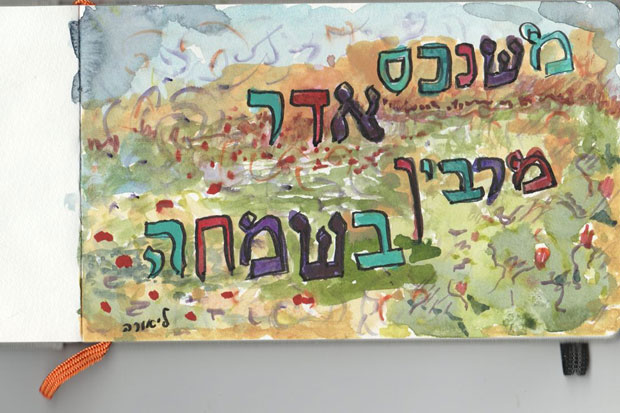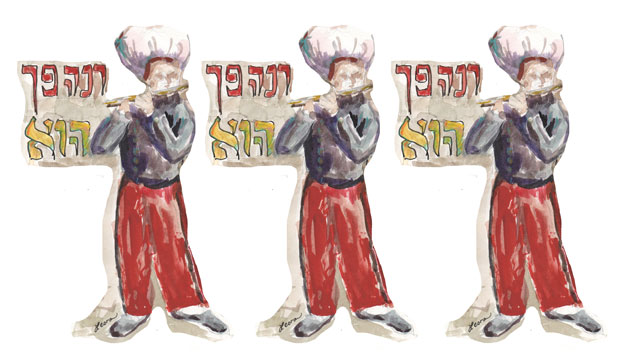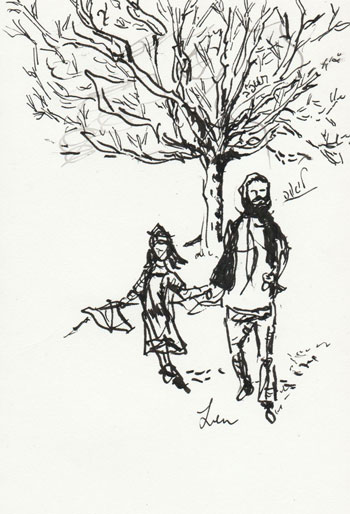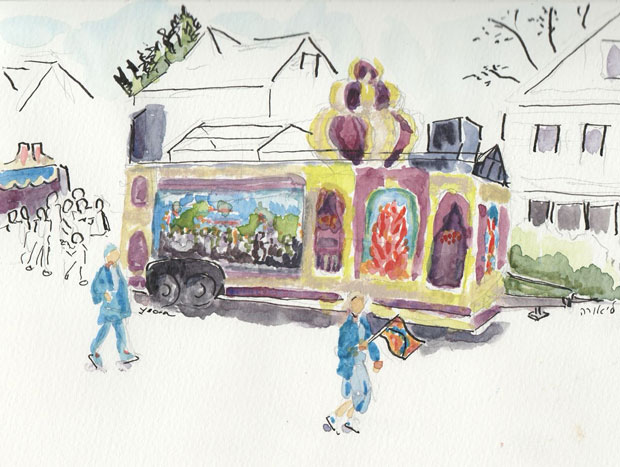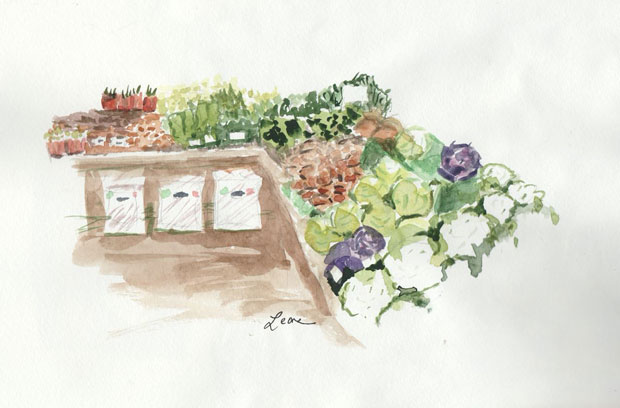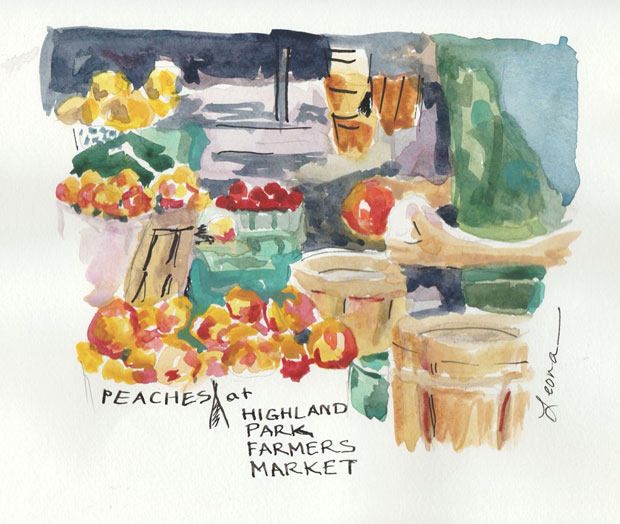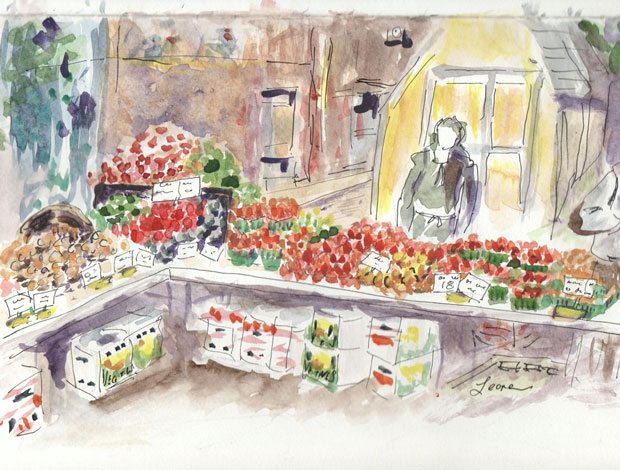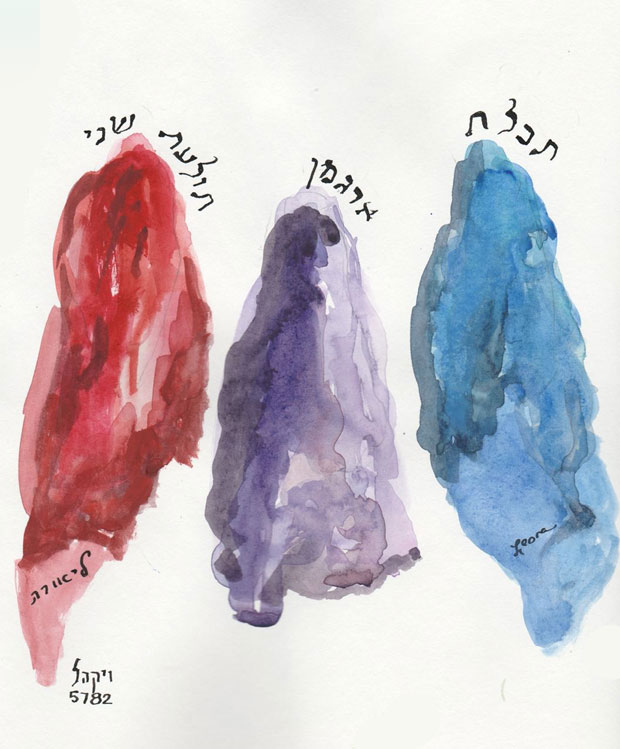
The passages describing colors of the Mishkan inspired me to do some drapery studies. Years ago, when I was in art school, I remember learning to do triangles of color. Put together a palette of a dark red, a medium red, and a light red. And do triangles.
When you read passages from the Torah in translation, you are often not reading exactly what the text intended. Not that we know for sure what the text intended.
In parshat Veyakhel and in parshat Pekudai (those two often go together, but this year we have a leap year — yay, two months of Adar! Lots of opportunity for joy) colors are mentioned among the items that people brought to help build the Mishkan, the holy structure for worship. The Hebrew is “techelet, argaman, and tola’at shani” (Exodus 35:6):
וּתְכֵלֶת וְאַרְגָּמָן וְתוֹלַעַת שָׁנִי
Tola’at Sheni seems to be some kind of red. I saw translations as scarlet or crimson. I saw tabernacle photos with worm-like creatures that were coral. Tola’at does seem to be a worm of sorts.
Techelet is some kind of blue. The Stone Chumash, published by Art Scroll, translates techelet as turquoise. Here is my turquoise version:
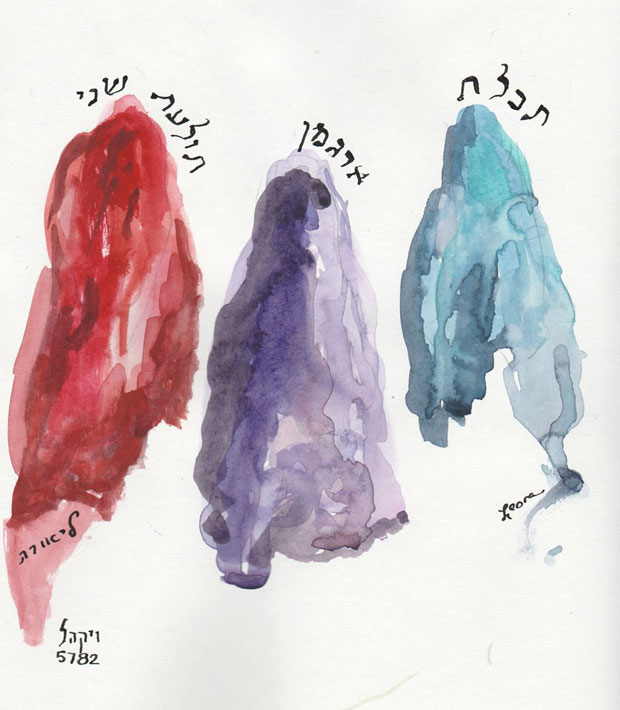
Robert Alter in his Bible translation uses indigo. Jewish Publication Society went with the safe translation: blue. The painting at the top of this post is my “blue” version.
Argaman is loosely translated as purple. However, one friend thought argaman should have a tint of red, as in burgundy or bordeaux. Or maybe violet. So here is yet a third version:
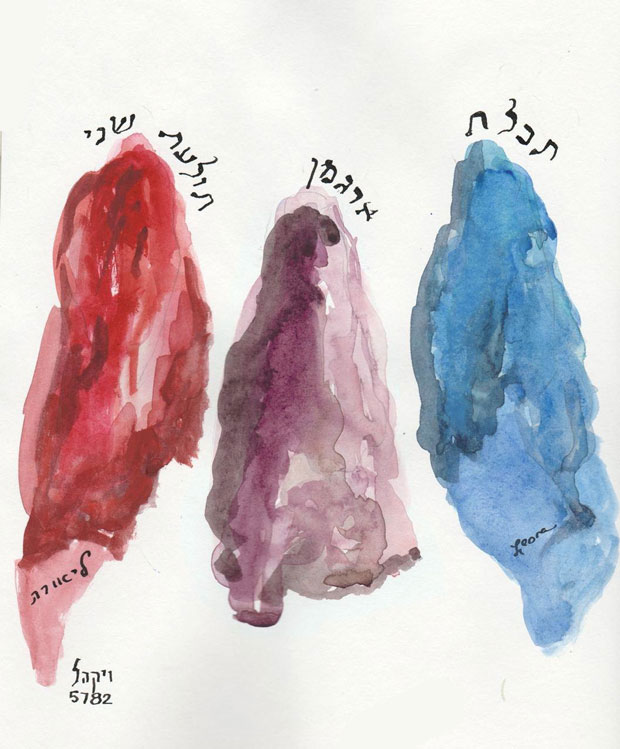
I created the burgundy by loading the top painting with blue in my Linux laptop. There I used GIMP, a free and open software package, to change the hue of the purple to burgundy.

